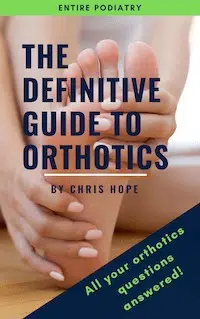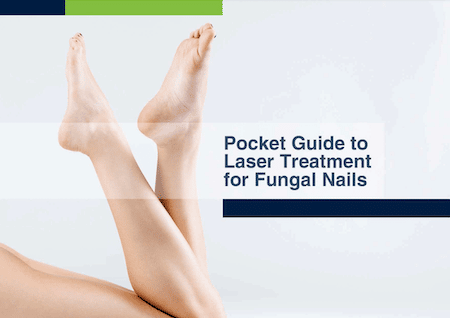Nail salons are often seen as a refuge, a resting place, a retreat into peace and stillness. It’s a place you go to relax, unwind, and get pampered.
After a long week of being on your feet a lot you might decide to treat yourself to a pedicure at your local nail salon. The last thing you would expect is for your newly pampered toes to pick up a fungal infection.
Unfortunately, when the right precautions aren’t taken, nail salons are a haven for the types of fungi that wreak havoc on healthy nails.
Fungal nail is a common infection of the toenails or fingernails that can cause discoloration, thickening or weakening of the nails, and even pain.
Nail infections can be tough to treat. As a Podiatrist, I see people every day who come to my clinics desperate to rid themselves of fungal nail. Many people don’t know where they picked up the infection, but a lot of them have one thing in common – frequent trips to the nail salon.
The correlation makes perfect sense. Nail salons are a veritable paradise for the types of fungi that cause fungal nail. A pedicure presents the potential for minor trauma to your skin and nails, which in combination with poor sanitisation measures, makes infection a very real risk.
While it is possible to get rid of fungal nail, the infection can be very stubborn, and the best precaution is always prevention. Learn how to discern whether your favorite nail salon is safe and make sure you stay fungal nail free.
What Causes Fungal Nail and Why Might Nail Salons Increase Your Risk?
Fungal nail is most commonly caused by dermatophyte, yeast, or non-dermatophyte mould infections. These fungi thrive in moist environments and are easily transmitted, making nail salons the perfect environment for fungal nail to run rampant if the right precautions aren’t taken.
Nails become especially susceptible to infection with the trauma inducing practices nail technicians commonly use. Once your feet have had a nice relaxing soak, your pedicurist typically starts pushing your cuticles back, trimming any dry skin, and using sharp instruments to clean around the edge of your nails. If the nail salon and pedicurist don’t follow best practice techniques and protocol, then this kind of treatment has the potential to create portals of entry for infective organisms.
In addition to minimising trauma to the skin that may create a point of entry for infection, tools need to be properly sterilised.
But surely all nail salons follow proper precautions to ensure fungal organisms simply can’t be spread, don’t they? The answer is one you might not want to hear…
While many nail salons may follow best practice techniques when it comes to hygiene and sterilisation of equipment, the reality is that nail salons in Australia aren’t heavily regulated in this regard. For this reason, as a consumer it pays to be well-informed about the risks and to know what to look for from your nail salon provider.
Are There Other Ways to Contract Fungal Nail?
There are many ways to contract fungal nail and there are a few things that make you more susceptible to it.
Walking barefoot in wet and moist environments like pools or saunas, sharing personal items like nail clippers, not changing your shoes often or wearing constrictive footwear all impact your susceptibility to fungal nail.
Certain health conditions can also influence the likelihood of contracting fungal nail including pre-existing nail injury or trauma to the nails, having a weakened immune system, diabetes, smoking, and ageing.
Nail salons are a common environment where it is possible to both be exposed to the fungus and sustain trauma to the nail or cuticle that creates a potential entry point for infection.
Knowing How to Protect Yourself
Fungal nail is hard to deal with and it can cause discomfort. Take the following precautions to make sure your next pedicure doesn’t lead to a long term fungal infection:
- Don’t let the pedicurist use sharp instruments such as scalpel blades or skin shaving devices (for example, to cut cuticles, trim dead skin or clean under your nails). Tools such as these can increase the chances of your skin being cut, creating a portal of entry for micro-organisms.
- If the pedicure spa tub doesn’t look clean, forego the pedicure and go somewhere else.
- Avoid shaving your legs for at least 24 hours prior to your pedicure (small nicks from shaving can act as potential entry points for micro-organisms).
Keep an open line of communication with your pedicurist. Don’t be afraid to ask questions like these:
- How are the footbaths are cleaned? (The filtration system should be cleaned regularly using an appropriate chemical cleaner).
- Does the salon use an autoclave to sterilise clippers and other metal instruments between clients?
- Does the salon properly dispose of items that can’t be sterilised after using them once on a client? For example, nail files, cotton balls, wooden tools.
- Do they wash/replace the towels used to dry a client’s feet each time?
- Do they mind if you bring your own equipment?
- Does the pedicurist wash their hands thoroughly between clients and/or wear disposable gloves between clients?
Try arriving early for your appointment and spend some time observing hygiene practices at the salon.
How often do you see the pedicurists washing their hands, disposing of used equipment, and taking reusable equipment out of packets and to sterilisation machines?
If what you see doesn’t reflect the best practices that ensure your safety, it’s time to find a new salon.
What About Manicures?
The next time you go for a manicure, keep in mind that you can get fungal nail on your fingernails as well. While it’s more common in toenails, the same precautions and sterilisation procedures still need to be followed with manicures.
How Will I Know If I Have Fungal Nail?
There are some common signs to watch out for if you think you might have fungal nail.
Early signs of fungal nail include:
- White, yellow or brown streaks on the nail
- Crumbling of the nail
- Thickening of the nail
- Scaling under the nail
What Should I Do If I Think I Have Fungal Nail?
First off, don’t worry. New technology makes dealing with fungal nail much simpler than it has been in the past.
If you think you might have fungal nail, the best course of action is to contact a qualified Podiatrist like Entire Podiatry.
Entire Podiatry provides podiatry services from 9 clinics across Brisbane, Moreton Bay, Logan and on the Gold Coast. We’re committed to providing long-term solutions to our clients while empowering them to make informed choices when it comes to their foot health.
We’re proud to offer the latest research based treatments for fungal nail. The leading edge of non-invasive fungal nail treatment uses Cutera GenesisPlus laser technology to get to the root of the issue. Our Laser Podiatry services are available at our Brisbane CBD and Robina Easy T clinics, however an initial assessment of fungal nail can be conducted at any of our 9 clinics across Brisbane and on the Gold Coast.
Book an appointment online now or call us on 1800 4 ENTIRE to find out how we can help you get your nails healthy again.




